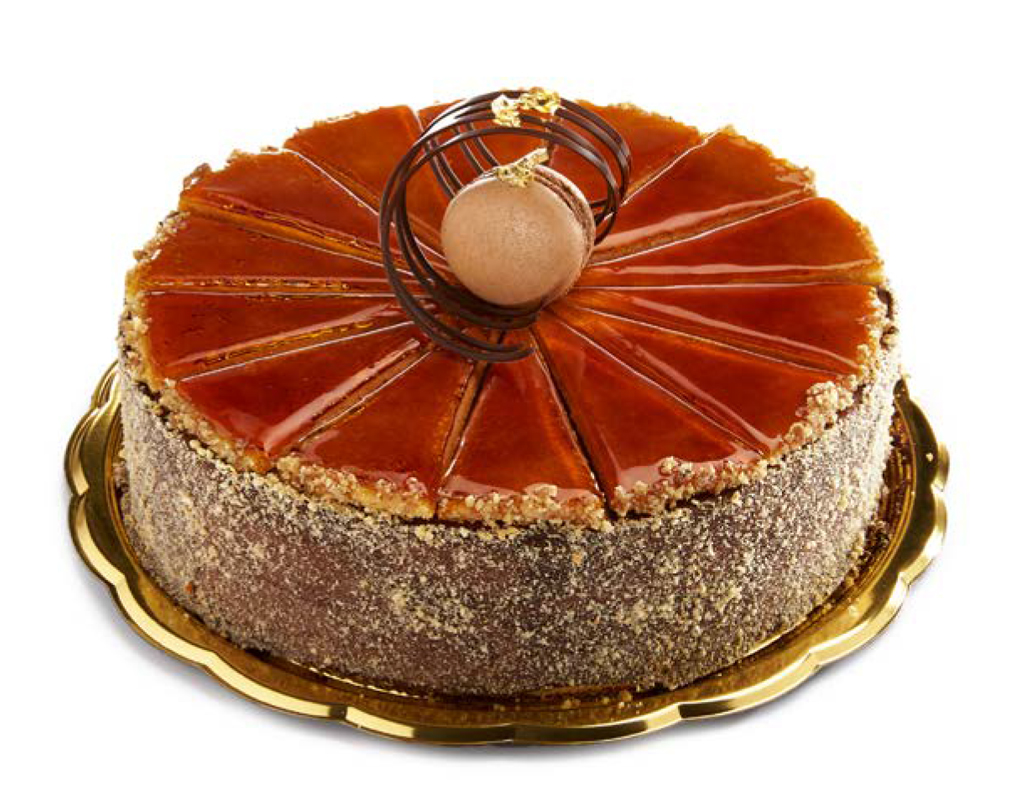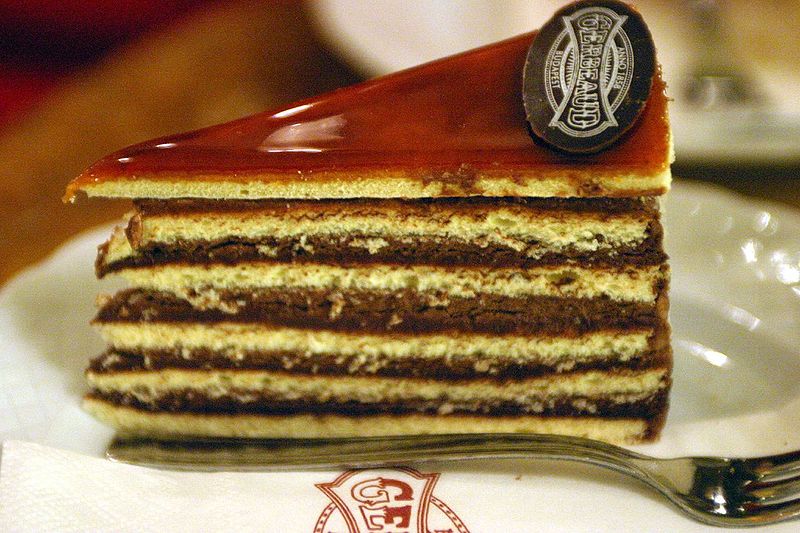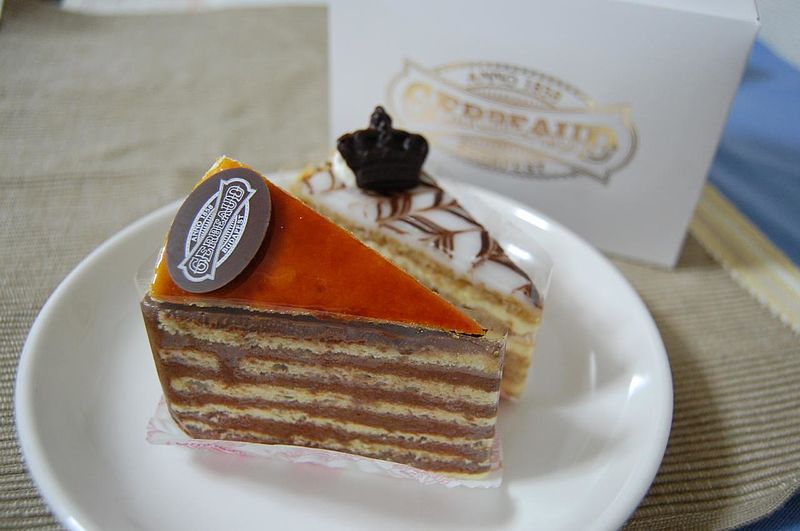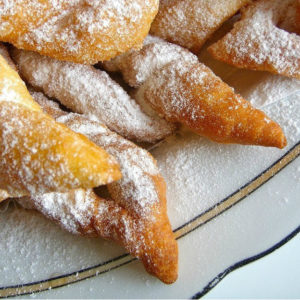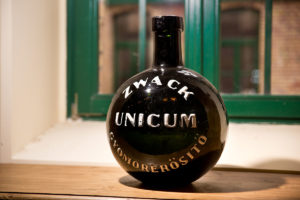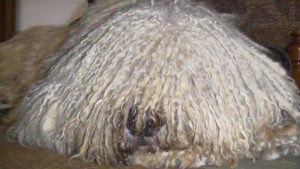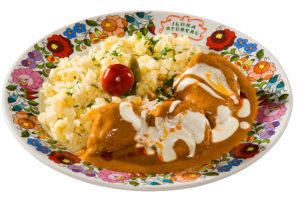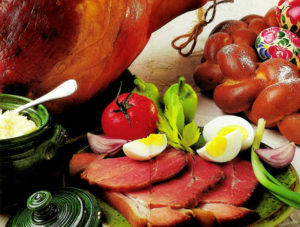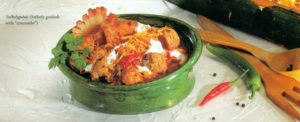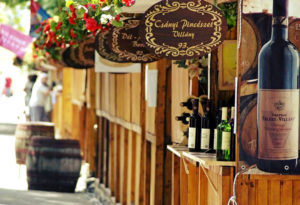Hungarian “Dobos” cake
The Hungarian “Dobos” cake (dobostorta) was the first Hungarian pastry that was added to the list of Hungarikums in 2019, fulfilling the dreams of many pastry chefs who had been recommending it for years.
A sweet, sweet accident
The Dobos cake, as a revolutionary pastry was born as an accident in the Monarchy era.
It happens to almost everyone who spends a lot of time in the kitchen, that they accidentally put sugar into something instead of salt, and it happened to the apprentice of József C. Dobos too. Normally in those times the butter was preserved with salt, but the inattentive boy accidentally mixed it with sugar. The pastry chef, aware of the incident, did not throw out the boy or the final result: he slightly reprimanded the former, then tasted the latter, and because he liked it, the butter cream was approved. The same butter cream is still used between the slim sponge cake layers of the dobostorta.
Compared to the meringutes that basically defined the era, the dobostorta was easier to be preserved. It maintained its consistency and was consumable for a longer time period than the cakes of the time baked with whipped cream. The other practical innovation and pleasant surprise for the first explorers of the cake was the mixing of melted butter for the finished sponge cake, which made it creamier and crumblier.
The Queen’s verdict
Sissi, who had a sweet tooth, was credited with laying the groundwork for the dobostorta’s success. After many refinements and experiments, the cake made its debut in the pavilion of the pastry chef in 1885 at the first Budapest National General Exhibition in the City Park. Dobos appeared there as a delicacy merchant, with the goose liver, truffles, asparagus, and the dobostorta. Queen Elizabeth and Franz Joseph tried and loved it.
Its simple elegance was pleasing to both the Queen and the capital’s gourmets, and the cake quickly became popular in Budapest’s pastry shops. Its reputation rapidly reached the borders of the Monarchy, and the cake went on an international tour, usually on wagons, nested in salted ice.
No secrets
More and more pastry chefs wanted the success of the dobostorta, many tried to copy the cake, but the original recipe was top secret. But József C. Dobos was a proud and sensitive man, and in the end, he could not accept that under the name of dobostorta there were many cakes of different quality in Budapest and throughout Europe. Therefore, in 1906, when he retired, he handed over the recipe for the cake to the Metropolitan Confectionery and Gingerbread Industry, on the condition that any member of the industry could use it freely.
József C. Dobos: Recipe of The Dobostorta
To assemble a sponge cake for a cake:
Mix 6 egg yolks well with 3 lats (5 dkg) icing sugar, whisk 6 egg whites as hard foam with 3 lats (5 dkg) of icing sugar, then mix the yolks with 6 lats (10 dkg) of flour and 2 lats (3,5 dkg) of melted butter.
To assemble the cream for a cake:
4 whole eggs, 12 lats of caster sugar (20 dkg), 14 lats (23,5 dkg) of tea butter, 2 lats of solid cocoa paste (3,5 dkg), 1 lat of vanilla sugar (1,7 dkg), 2 lats of cocoa butter (3,5 dkg), 1 slab of chocolate (20 dkg). Heat the 4 eggs with 12 lats of icing sugar on gas and, if warm, stir it off the gas until cools down. Mix 14 lats of butter with 1 lat of vanilla sugar, 2 lats of melted cocoa and 2 lats of melted cocoa butter, and the 12 lats of melted chocolate. Mix it well with the cold egg mass, fill 5 layers with the cream, and the 6th should be covered with dobos sugar, and cut to 20 pieces.
This sweet Hungarikum can only be called dobostorta if the recipe is strictly followed, no alteration or innovation is tolerated.
Photos: https://gerbeaud.hu



